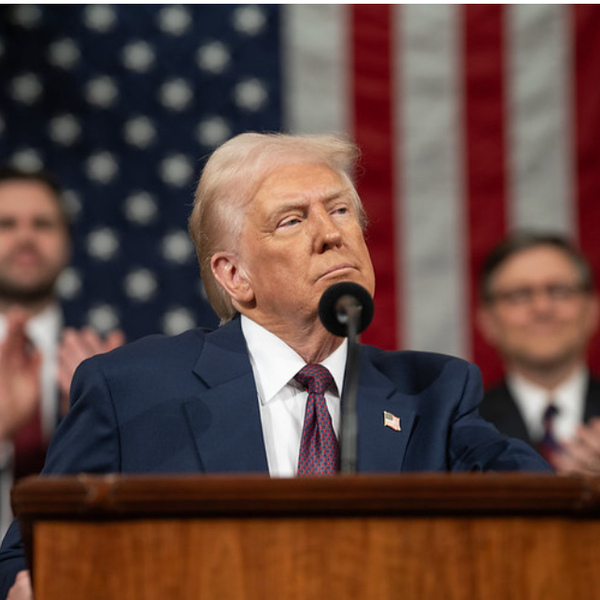
A recent study from the Pew Research Center shows that contempt across the partisan divide is bitter and widespread. Respondents displayed a nasty animosity for the opposing side and showed little sign of tolerance for conflicting views.
Party polarization has been underway for years, and the Congress has never been so divided. But the toxic, finger-pointing rabble has escaped like a demon from Capitol Hill and spread plague-like throughout the United States. The toxicity doesn’t stifle, it chokes. Discourse has become nearly impossible. Wherever one stands, the other side is no longer judged as merely wrong or misguided, but is now considered dangerously stupid and lazy; scary, dishonest, immoral, and more than anything, a threat.
In 2014, a Pew study of political polarization noted the “growing contempt that many Republicans and Democrats have for the opposing party,” and since then, “many” is now “most.”
This year, 58 percent of Republicans have a “very unfavorable impression” of Democrats, 12 percent more than two years ago and 26 percent more than in 2008. Democrats’ disdain for Republicans has followed a similar trajectory.
The 2014 survey asked Democrats and Republicans who offered “very unfavorable opinions” of the opposing party if they felt the other side was “so misguided that they threaten the nation’s well-being.” Thirty-seven percent of Republicans and 31 percent of Democrats felt this way, and in two years those numbers have increased by eight and 10 points, respectively.
Among Democrats, 55 percent say the Republican Party makes them feel “afraid.” Forty-nine percent of Republicans say that about Democrats. These numbers increase among the highly politically engaged, with 70 percent of Democrats and 62 percent of Republicans fearing their opposition.
Disdain for the other side is as strong, and sometimes outweighs, positive feelings about the party one belongs to. Majorities of Democrats and Republicans cite their party’s platform as their deciding factor for joining, but almost as many say they were driven by “the harm caused by the opposing party’s policies.” Even independent voters, who have come to outnumber members of both major parties and tend to lean Democratic or Republican, are overwhelmingly inclined to cite negative factors for their loose partisan ties.
On a “thermometer” scale of 0-100, where zero is the coldest rating and 100 is the warmest, Democrats give Republicans the mean rating of 31, and Republicans give Democrats a 29. Things get even colder for politicians: Democrats’ average rating of Trump is 11, and Republicans, on average, give Clinton a 12.
Among Democrats, the most resonating critique of Republicans is that members of the GOP are more closed-minded than other Americans; 70 percent of Democrats feel this way. Forty-two percent of Democrats say Republicans are more dishonest, 35 percent say they are more immoral, and 33 percent say they are more unintelligent. By contrast, more than half of Republicans, 52 percent, see Democrats as more closed-minded than other Americans and nearly as many say Democrats are more immoral, dishonest, and lazy.
Not surprisingly, respondents expressed approval for members of their own party. Sixty-seven percent of Democrats consider themselves more open-minded than other Americans, and 59 percent and 51 percent of Republicans, respectively, say GOP members are more hardworking and moral. Republicans and Democrats also show a tendency to view the opposing party as highly ideological, while considering their own less ideological.
There is some hope for social cohesion among diverging parties, but little hope for helpful political discussion. The majority of Democrats and Republicans think they could get along with a new neighbor from the other party, but 42 percent of Democrats and 43 percent of Republicans say it would be easier to welcome members of their own party into the neighborhood. Democrats and Republicans are about equally inclined to say political conversation with people whom they disagree with is “stressful and frustrating” as “interesting and informative” — and either way, an equal amount of Democrats and Republicans, 44 percent, say they “almost never” agree with the other party’s positions.
The cause for this divide is unclear, but researchers suggest a merging of politics, lifestyle, and choice of residence has limited many Americans’ exposure to people with different opinions.
Pew President Michael Dimock told NPR, “If we in fact are surrounding ourselves increasingly with like-minded people, that becomes another factor that can potentially create distance between ‘our side’ and ‘their side.’”
In a 2015 article for the Washington Post, titled The top 10 reasons American politics are so broken, social psychologist Jonathan Haidt and political science professor Sam Abrams write, “Liberals and conservatives dress differently, decorate their rooms differently, read different books, take different vacations and drink different alcoholic beverages. As the differences between supporters of the two parties became ever more pervasive and ever more visible to the naked eye, it became easier to spot members of the other team and then dislike them for the way they live.”
There is also the strange relationship between policy positions and political parties that seems to decide voters’ stances on how to handle seemingly disconnected issues.
“The more conservative you are on foreign policy, the more likely you are to be conservative on social issues, on economic issues, on the role of government,” Dimock said. “These dimensions, many of which had very little correlation with each other in the past, are getting increasingly aligned.”
Haidt and Abrams say this is the result of a combination of geography, immigration, and what they call ideological purification, meaning a lack of intellectual diversity within both major parties. The Republicans are conservatives and the Democrats are liberals, which was not the case before 1980.
“The Democratic Party was historically an agrarian party with its power base in the South,” Haidt and Abrams write. “But with the political purification of the parties, the Democrats have become the urban party, focused on issues of concern to city dwellers and expressing more cosmopolitan and secular values. Rural areas, meanwhile, shifted toward the Republican Party. The GOP became much more hospitable to rural interests and values, which tend to be more religious, patriotic and family-oriented.”
So why is there so much hostility on the political landscape? As Haidt and Abrams note, “a basic principle in social psychology is that people will divide themselves up quite readily based on the most trivial distinctions” – and these are not trivial matters.
Photo: Protesters confront a woman, center, leaving a rally for Republican U.S. presidential candidate Donald Trump in Fresno, California, U.S. May 27, 2016. REUTERS/Noah Berger








